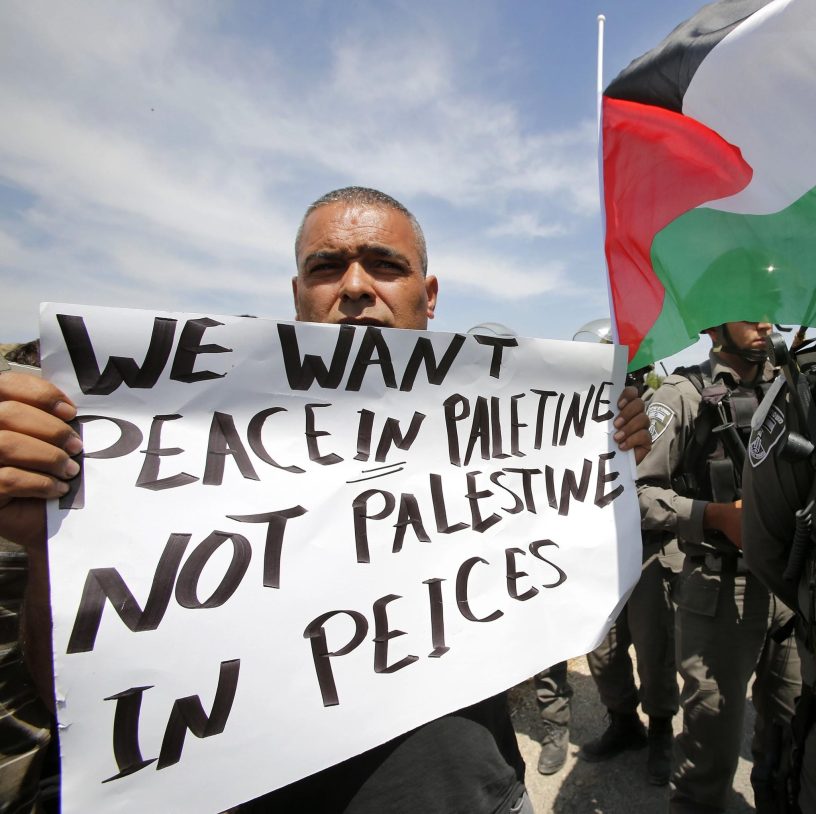Alagi Yorro Jallow
 Fatoumatta: The Israeli-Palestinian conflict needs to be understood from a nationalistic point of view. The Israeli–Palestinian dispute arose in the late 19th and early 20th centuries, with the birth of major nationalist movements among the Jews and Arabs, both geared towards attaining sovereignty for their people in the Middle East.
Fatoumatta: The Israeli-Palestinian conflict needs to be understood from a nationalistic point of view. The Israeli–Palestinian dispute arose in the late 19th and early 20th centuries, with the birth of major nationalist movements among the Jews and Arabs, both geared towards attaining sovereignty for their people in the Middle East.
After the fall of the Ottoman empire following the first world war, much of the Middle East, including the area constituting modern Israel, fell under Britain’s control. They would hold onto the region until 1936 when the Arabs revolted against the British and their Jewish neighbors. Following the unrest, the British government administered the Peel Commission of inquiry led by Lord Peel to investigate the causes of the rebellion.
The commission concluded that the problem was that two peoples, Jews, and Arabs wanted to govern the same land. On 7 July 1937, the commission published a report that, for the first time, stated that the League of Nations Mandate had become unworkable and recommended partition. The British cabinet endorsed the separation, i.e., a two-state solution, one for Jews and another for Arabs. The Arabs were to receive 80% of the disputed land and the Jews 20%. The Jews voted for the plan, but their Arab neighbors rejected it.
Fatoumatta: While both Arabs and Jews would prefer a two-state solution, mutual distrust and significant disagreements are deep over fundamental issues, along with skepticism about each other commitment to upholding their end of the bargain in the eventual agreement. In 1947 Britain asked the UN to find a new solution to the conflict. The UN suggested that the land be divided, and in November 1947, the organization voted to create two states. The Jews accepted the proposal, but the Arabs rejected it by launching an all-out war against Israel. Egypt, Jordan, Iraq, Lebanon, and Syria joined the fight but failed. Israel won the battle and went on with the business of building their nation. Most of the lands set aside by the UN for an Arab state in the West Bank and East Jerusalem became occupied by Jordan.
Relations between Israel and its neighbors were not normalized after the 1948 Arab–Israeli War. In 1956 Israel invaded the Sinai peninsula in Egypt. One of its objectives was the reopening of the Straits of Tiran that Egypt had blocked to Israeli shipping since 1950. Israel was eventually forced to withdraw but was guaranteed that the Straits of Tiran would remain open. However, tensions remained. Israel reiterated its post-1956 position that the closure of the Straits of Tiran to Israeli shipping would be a cause for war.
In 1967, Arabs led by Egypt, Jordan, and Syria sought to destroy the Israeli state in what has been described here as the war that never was, the six-day war. The Egyptians were surprised, and nearly the entire Egyptian Air Force was destroyed with few Israeli losses. Israel took Jerusalem, West Bank, and the Gaza strip. However, the Israeli government was divided on what to do with the spoils of war. One half wanted a return of the West Bank to Jordan and the Gaza strip to Egypt in exchange for peace. In contrast, the other half suggested that they are given to the regions Arabs who had started identifying themselves as Palestinians, hoping to build their state.
Fatoumatta: In the same year,1967, the Arab League Summit was convened in Sudan. The three notable agreements were the ‘3 Nos’:
1. NO PEACE WITH ISRAEL.
2. NO RECOGNITION OF ISRAEL.
3. NO NEGOTIATIONS WITH ISRAEL.
In the year 2000, the Israeli Prime Minister, Ehud Barak, met with Yasser Arafat, the Palestine Liberation Organization chairman at Camp David, to discuss a new two-state plan. The United States president Bill Clinton led negotiations. Barak offered a Palestinian state in Gaza, 94% of West Bank with East Jerusalem as capital. Yasser Arafat declined the offer. Bill Clinton famously remarked that “Arafat was here for 14 days and said “No” to everything. In the years that would follow, Palestinians embarked on a wave of suicide bombings against Israelis, killing and maiming many.
In 2005 Israel left Gaza under complete control of the Palestinians. Instead of developing the territory for their excellent, they turned the Gaza strip into a terrorist base and continued an unending provocation of Israel.
In 2008 the then Israeli Prime Minister Ehud Olmert, in a meeting with Mahmoud Abbas, the president of the Palestinian National Authority, offered more land perhaps to make the deal better. Mahmoud Abbas rejected the agreement. Without a promise of a workable solution acceptable by the Palestinians, maybe the only solution is for the Arabs to accept the reality of the existence of a Jewish state.
Fatoumatta: The current outbreak of fighting began with a series of controversial Israeli actions in Jerusalem — including the attempted eviction of Palestinian families in East Jerusalem by right-wing Jewish settlers, an Israeli police raid on Palestinian worshippers at al-Aqsa Mosque, and a planned provocative march by far-right Israelis — that prompted Hamas to fire a barrage of rockets at Jerusalem and other major cities in Israel. Israel responded with devastating airstrikes in the Hamas-controlled Gaza Strip.




Ma sha Allah great and thanks for sharing